Spring Cleaning
Or, shopping your pantry
In the 26 years we have lived in our circa 1973 little house on a hill we have changed almost everything. When we moved in it was a relief that it needed no work. Everything was solid, still in good shape, and clean. I was seven months pregnant with our fourth. Our previous home had been a fixer-upper that we’d been fixing-up for years so it was a relief to just let style go and have a cozy little home. It felt was as if we had stepped back into 1973. Popcorn ceiling. Avocado green and dark wood stain was the color palette. The curtains were the kind that has the rubber baking, the vinyl flooring with its abstract pattern, and the shag carpet though not full long shag, more of a medium shag where all shades of avocado green. The range, green. Thankfully, the tub, toilet, and bathroom sink were off-white. Can I just say the curtains were hideous?
One day, a year or so after we moved there, our oldest son had set up a carnival-style game. He put all a row of stuffed animals balanced along the top of the couch. Then he and his brother tossed a tennis ball to knock them down. The couch was below the window. One of the tennis balls went right through the window. We had to replace the window, which also meant replacing all the curtains. This opened the floodgate of projects. Until today, every surface has been scraped, painted, or replaced save the kitchen cabinets and a few dark-stained hollow-core doors.
To replace the stove vent that made a lot of noise and seemed to vent nothing, we decided to finally remove the wall of cabinets that separated the kitchen from the dining area. As much as I wanted the light, open feeling doing so promised, I also liked all the pantry and storage space. Today, those cabinets were removed, and I am still shocked by walking into the space.

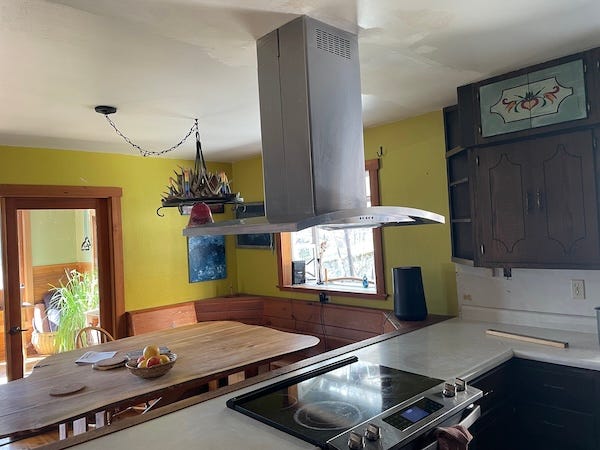
BUT the real story is how I had to clean eleven cabinets to remove seven. In doing so, I had to go through pantry items, cookbooks, glassware, candles, jars, and other things that were just dusty--abandoned house dusty. Of the seven cabinets that are gone, we only used the two with dry goods any regularity. And since I am being honest here, only the front half saw any movement. These cabinets are all dark and high, right below the ceiling so things that had drifted to the back were just non-existent in my world. For example, I was chagrined to find half a bag of coconut flour with a use-by date of June 21, 2022, which means its freshness ran out long before that. I really hate when this happens. I sprinkled into a garden bed for organic matter and maybe some nutrients for the soil and its microbes.
On a more positive note, I also found a partial bag of dried nixtamalized posole corn, also called hominy, that I was able to soak, and with some also-forgotten frozen tomato soup from a summer garden, I made an amazing stew. We live 35 minutes from the nearest grocery, so I tend to get in moods where I don’t want to go to town, and I challenge myself to see how many days I can avoid getting in the car. But that isn’t always the case; at this point, it has been a while.
Now, my kitchen is much brighter and spacious. I donated a lot(!) of cookbooks and crystalware. I made some clutter-reducing, cost and food saving meals I am inspired to methodically “shop” at my freezer, my pantry, and my fermentation fridge over the next few weeks I say methodically because I tend to be an intuitive cook and do try to choose my next meal by what needs to be eaten most—from leftovers to vegetables. However, when it comes to the dry goods, my own preserved bounty (fermented, dried, canned and frozen), I am less likely to remember to build a meal off some of the things that have been hanging around the longest.
I am also inspired by my friend April McGreger of Preserving the South who has partnered with FoodPrint (a non-profit dedicated to food education and production practices) to put together the Eat Down Your Pantry Challenge. They invited me to join them.
Synchronicity is one of my favorite marvels of the universe. I signed up yesterday for this self-guided challenge. I am great at creating! (You should see all the places I have ferments bubbling, hiding, and lingering…) I am good at using. I am terrible at organizing. I signed up to learn how to take an inventory. No joke. If fermenting and preserving is my superpower, then knowing what I have is my kryptonite.
It just occurred to me that I should find my oldest ferment and oldest jar of home-canned something and report back to you all next week. It will be both enlightening and embarrassing.
Does this seem like something you would enjoy? You can also join whenever you’d like. You will receive four weekly emails. The emails will include tips for organizing your pantry, fridge and freezer, meal planning from your inventory and making creative meals with what you already have.
Fermenting to avoid waste
In January, I was given a pile of local beets. I love beets, both baked (ooooh, soooo sweet) and fermented (tangy, not sweet at all). Beets are great because they last for a long time in the fridge, but that allows me to be lazy and keep putting off preparing them.
It was time. Last week, I took the first pass of all the neglected vegetables in the fridge. I took the saddest of the beets and found a droopy celery center, a partial cabbage, and an aging fennel bulb. These limp vegetables still make great ferments. At first, I was going to put them all together and make an “everything but” ferment. However, I knew I would have more options for future meals and better flavor by creating two simple ferments.
I trimmed the cabbage and fennel and shredded them to create a cabbage fennel kraut.
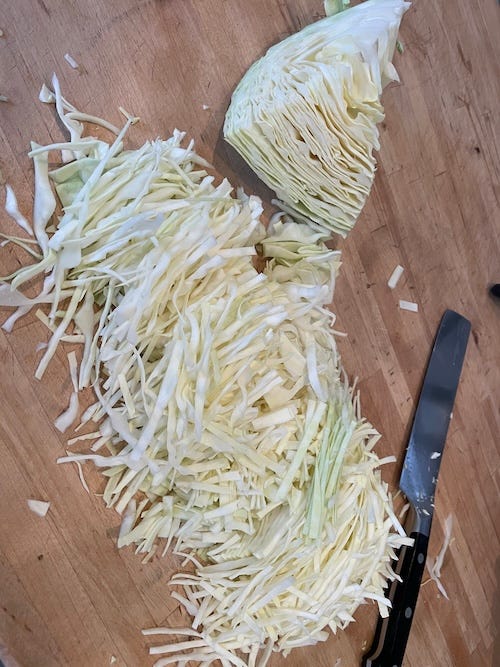
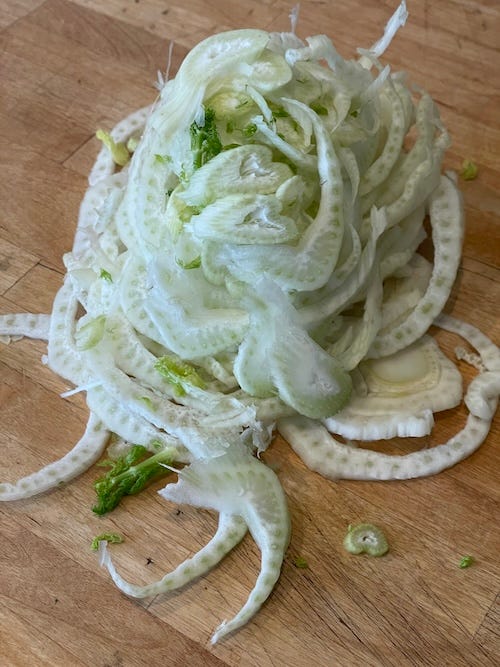
To jazz up the beets and celery, I added a red onion. I have to say I am so very happy with this ferment. It is so bright in both flavor and color. I am using it with fresh kale and olive oil to create easy salads.
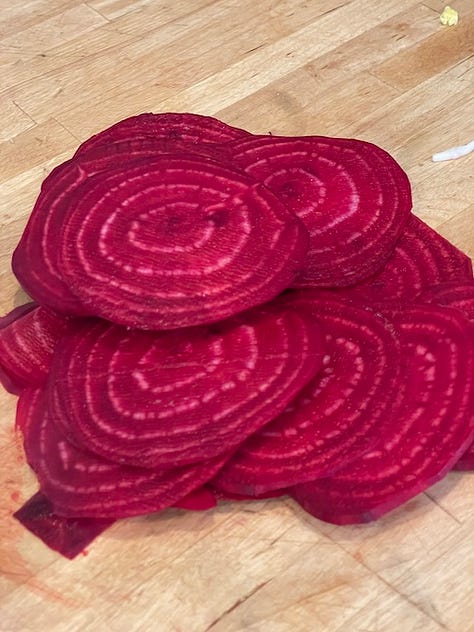


The trick to save-the-vegetable-ferments is to weigh your trimmed and prepared vegetables in grams. Choose the salt percentage you would like. I did 1.5 % for both. That 1.5 % is great for winter vegetables during cool-weather fermentation conditions. To do that, take the weight and multiply by 0.015. This will give you the grams of salt needed.
If you don’t have a scale, don’t despair. You can also add salt a little at a time by taste. Mix it in well and taste the vegetables. You want to taste the salt, but it should not be overly salty or briny. You want it to be a pleasing flavor—like a chip.
I hope you feel confident to find your limp veggies and make a crispy, tasty ferment.
Paid subscribers be sure to join me tomorrow Sunday, March 9 at 12 pm Pacific Time for an Ask Me Anything zoom. I can answer your questions about “inventing a ferment” or whatever else you want to talk about related to fermentation.
I hope some of you will join me on this Eat Down Your Pantry Challenge. I love the creativity that comes from using what you have on hand. I hope if you join you share some of your creations in comments or sharing in notes—be sure to tag
and , where you can also read more about this challenge.


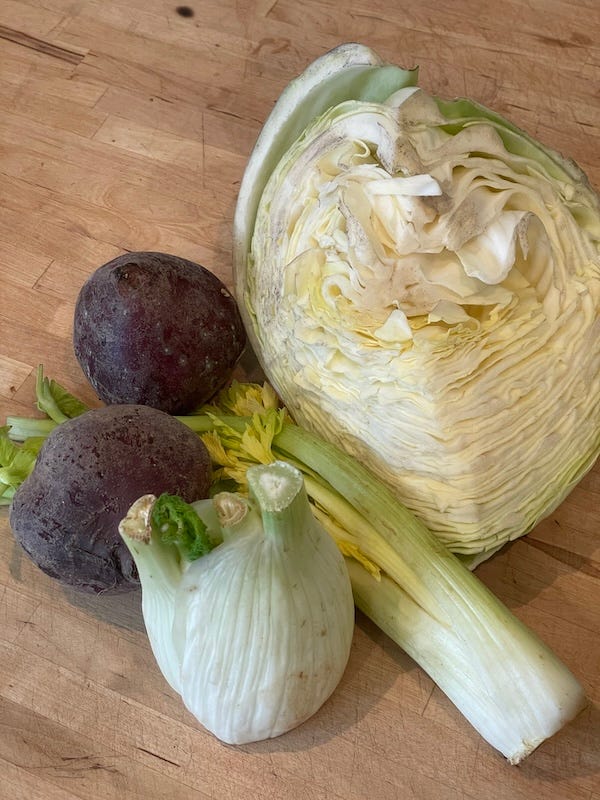
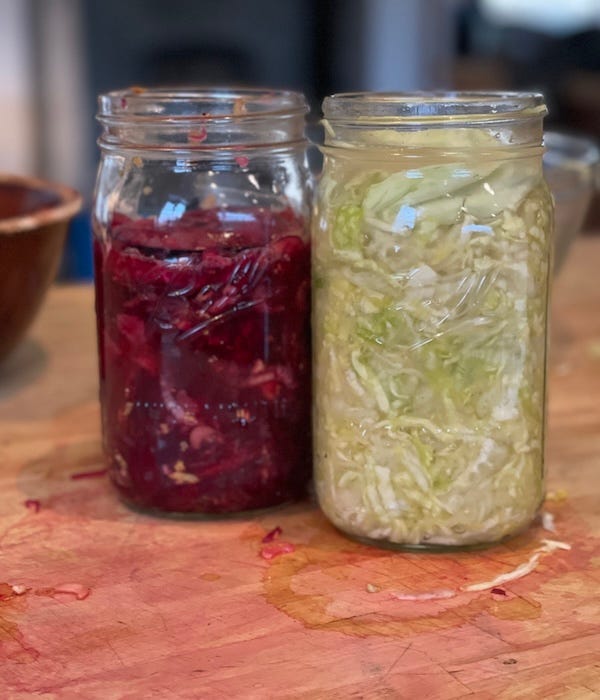
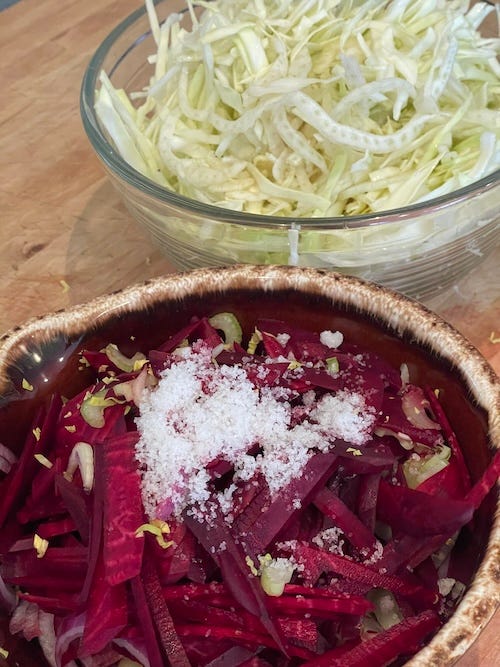
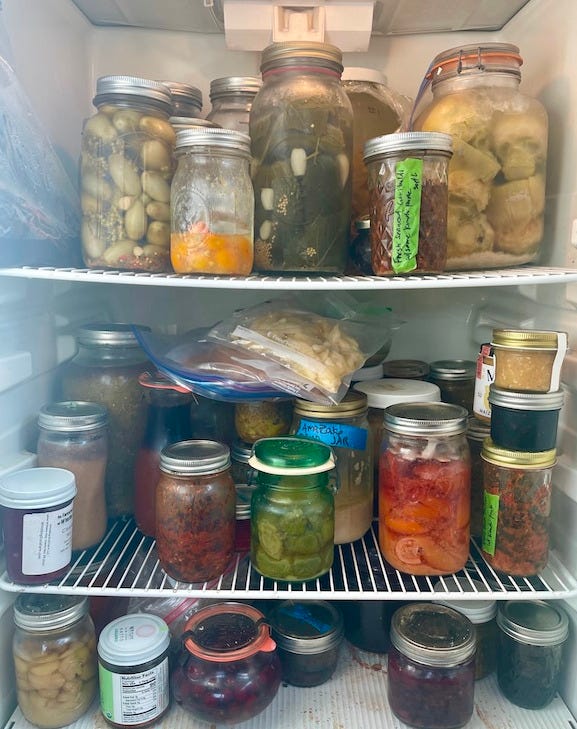
I love fermented beets, they are so tasty and good for you. Thank you for being so open about fermented beets And I too enjoy reading your posts. Thank you Kirsten , am going to have a spoonful. right now, tastes so good.
I rationalize those limp vegetables going to my chickens or at least the compost is not so bad. But now, I am challenged. I will try more wilted ferments!